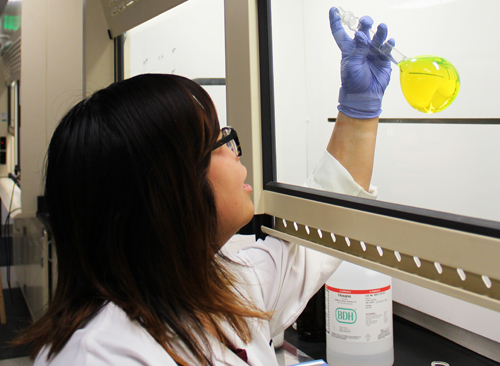 For many companies, especially those within the science-based environmental and remediation industries, research and development play a major role in the overall success of the company and, ultimately, its clients. A great example of this can be seen here at REGENESIS with our very own Research and Development Department, led by Dr. Kristen Thoreson.
For many companies, especially those within the science-based environmental and remediation industries, research and development play a major role in the overall success of the company and, ultimately, its clients. A great example of this can be seen here at REGENESIS with our very own Research and Development Department, led by Dr. Kristen Thoreson.
As an integral part of REGENESIS, the Research and Development (R&D) department provides several important functions. Primarily, the team is responsible for developing new technologies that expand the boundaries of what is possible in environmental remediation, and more specifically, groundwater and soil remediation. This includes searching for efficient and more cost-effective ways to close contaminated sites, while expanding the company’s range of products and solutions to treat contaminants. “Essentially we provide our clients with better tools,” shares REGENESIS Staff Scientist, Dr. Katherine Djernes-Pappano.
To appreciate the role of R&D in protecting our environment, one only needs to look closely at what fuels many of the world’s leading environmental organizations. One such organization is the International Society of Environmental Forensics (ISEF). The ISEF has grown out of the need for a platform to present scientific research that addresses environmental contamination subjected to law, public debate, or formal argumentation, as well as the evaluation of the basic science that serves as a foundation to those activities. With research and development as its backbone, the goal of the ISEF is to educate and inform by providing workshops and training on subject matter encompassing all aspects of contamination within the environmental media of air, water, soil, and biota. The society also serves to promote the publication and dissemination of relevant technical material.
Recognizing the importance that research and development play in a host of authoritative societies and organizations, such as the EPA, the Association of Environmental Health and Sciences Foundation (AEHS), the aforementioned ISEF, and others, Thoreson says the Team is doing its part each and every day. “We approach every project with the idea that our efforts in conceptualizing, testing, and evaluating new technologies can and do make a difference in our ability to successfully treat and close contaminated sites.”
In addition to pushing the boundaries of new technologies, department functions include the continual optimization and validation of all existing REGENESIS products, which requires designing experiments and collecting scientific data. The R&D group also manages the Laboratory Services offered by REGENESIS which includes oxidant demand testing and treatability tests for clients in order to demonstrate technology efficacy under site specific conditions. Beyond their work within their recently renovated laboratory, they collaborate closely with the REGENESIS technical sales team to help navigate technical hurdles and assist on large, complex projects, and they also provide guidance on quality control and manufacturing of all technologies in coordination with the Operations Department.
An especially unique aspect about R&D is that it is an all-female department, which is somewhat rare in the field of scientific research and development. In terms of individual backgrounds, the group shares common academic training in chemistry, as well as a sense of environmental responsibility. They are also a highly innovative and collaborative department. As one team member says, “Environmental remediation is vast and complex, and we recognize the importance of sharing creative ideas in our approach to exploring new solutions that will ultimately help create a cleaner, safer planet.”
For more on REGENESIS’s Research and Development department, and other company resources, please speak with your REGENESIS field sales engineer, or contact us at support@regenesis.com.


 Americas
Americas Europe
Europe Français
Français Deutsch
Deutsch Italiano
Italiano Español
Español


